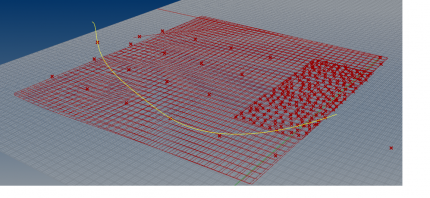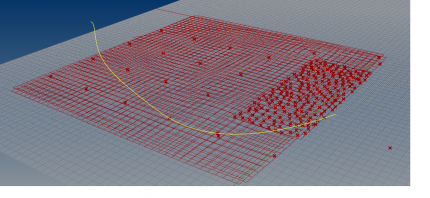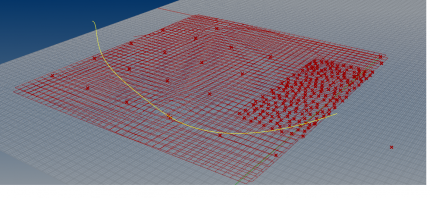Technique Documentation- performance modeling
In Rhino there is a command to set the Gradient in the background of the viewports. Select the GradientView command. With this tool the visibility of gradient can be altered. For changing the settings input –GradientView, and then you can change colors.
This is useful when the grasshopper definition is subtle, and the changes in the grid may not be rendered. The power of this kind of modeling is in the discovery process that leads to a new set of diagrammatic overlays.

The slider control bar is moved form left to right, repelling the grid where it interacts.
The residual spaces in the grid result in a pattern along the curve.
The block of red at the right of the screen has an attractor definition on it to react to the approach.
This tool plays a role in the history of performative architecture. Karl Chu’s approach to digital modeling uses very simple rules to express complex objects in a recursive process before he finds form. Adding science, BMW uses field emission microscopy (FEM) analysis for fabric and glass envelopes for designs across the globe. Computation fluid dynamics (CFD) analysis of wind flows by Future Systems is another way to visualize a buildings interaction with natural forces. The emphasis of understanding performance modeling is redefining expectations of design, wherby process is as important as practice.

